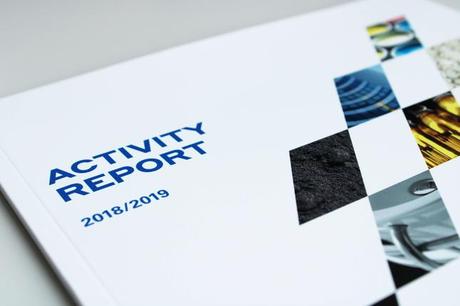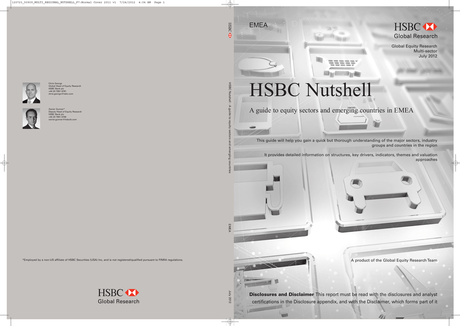Massive trading on Petro Rabigh’s shares exceeding SAR 10bn

Rabigh, Saudi Arabia Yearly Monthly Climate Weather Averages
Aramco said that discussions are preliminary and added that it has no plans to acquire any publicly held shares of SABIC. On the supposed reserves numbers themselves, there has been incredulity amongst many traders and analysts alike for years, which has only increased every time http://musikdev.jimdavislabs.se/akcii-pfizer-inc-stoimost-segodnja-35-76/ they have been revised upwards. At the beginning of 1989, Saudi Arabia claimed proven oil reserves of 170 billion barrels but, only a year later and without the discovery of any major new oil fields, the official reserves estimate was increased by 51.2% to 257 billion barrels.

A Saudi Aramco oil installation in the desert east of Riyadh. The company’s shares dropped 0.91 percent on Wednesday, while the Saudi index ended the day 0.59 percent higher.
The number of shares traded reached 228.5m shares exceeding the number of shares offered for IPO (219m shares) and representing the greatest number of shares traded in one day in the Saudi Exchange Market. Petro Rabigh Company’s shares were massively traded in the first days of the company’s listing reaching an amount of SAR 10.9bn. Looking at the world weather radar, national weather service and satellite images, Rabigh, Saudi Arabia weather forecaster is reporting little or no rainfall over the next 7 days. So make most of it while you are on vacation in Rabigh, Saudi Arabia. Saturday seems to be sunny.
Its pledge has always been to “maximise the value of the country’s petroleum reserves for the benefit of the kingdom’s citizens”. Exactly how that will be done if foreign investors can buy shares is a troubling and unanswered question, say critics. Such a debate doesn’t exist in the Kingdom of Saudi Arabia, where the 15 million or so nationals don’t dirty their hands in matters such as actually building major industrial projects.
Information about the Rabigh Refining & Petrochemical Co Share. You can find more details by going to one of the sections listed on this page such as historical data, charts, technical analysis and others.
“In addition, overlaying SABIC’s existing senior and middle management with those of Aramco, an antiquated state-owned bureaucracy, will significantly adversely affect SABIC’s operating efficiency and margins,” he told OilPrice.com. On a logistical note as well, he said, Aramco buying a majority stake in SABIC, given Aramco’s existing downstream infrastructure, http://oprechtscheiding.nl/valjutnaja-para-aud-chf/ will lead to enormous duplication of resources – people, offices, equipment, research and development, marketing, and capital employed, amongst others. What Aramco’s annual review does say is that the company – alongside its mountainous oil and gas reserves – controls more than 3m barrels a day of refining capacity, both inside Saudi and abroad.
Already a major force in the para-xylene market, Aramco will add significant new capacity at the Jazan refinery that is under construction in the southwestern corner http://www.kastpass.eu.org/2019/10/01/3-prichiny-sledit-za-cardano-v-2019-godu/ of Saudi Arabia. The last time that price was reached – during the height of the Asian financial crisis in 1998 – petrol prices fell to around 86p per litre.
- Please be fully informed regarding the risks and costs associated with trading the financial markets, it is one of the riskiest investment forms possible.
- By the beginning of 2014, according to the EIA, Saudi Arabia suddenly had approximately 266 billion barrels of proven oil reserves, in addition to half of the 2.5 billion barrels estimated in the Saudi-Kuwaiti shared Partitioned Neutral Zone.
- A Saudi Aramco oil installation in the desert east of Riyadh.
- LONDON, Feb 7 (Reuters) – Shares in British oil services firm Petrofac slumped almost 30 percent on Thursday after a former senior executive pleaded guilty to 11 counts of bribery in relation to oil deals in Iraq and Saudi Arabia.
- The only stamp of Saudi Arabia on Petro Rabigh is senior management and the billions of dollars in oil money to build it.
Financial
Please be fully informed regarding the risks and costs associated with trading the financial markets, it is one of the riskiest investment forms possible. Investing.com – Saudi Arabia equities were higher at the close on Tuesday, as gains in the Insurance, Retail and Agriculture & Food sectors propelled shares higher.
Rabigh Refining and Petrochemicl Co SJSC
The reality, though, is that for many seasoned oil and gas industry experts there remains a huge amount of scepticism towards the company and the Kingdom itself. Shares in Saudi Arabia’s Rabigh Refining and Petrochemical Company (Petrorabigh) dropped on Wednesday after the company reported a net loss for the fourth quarter (Q4) of 2018. The project, its managers said, will be among the largest petrochemical facilities in the world. Given its massive economies of scale with the existing and connected 400,000-barrel-a-day refinery and its central location to ship products worldwide, Petro Rabigh looks like it will instantly be a significant player in Saudi Arabia’s first foray into a new international market. Aramco already has major petchem interests in Saudi Arabia, in the form of JVs with Dow Chemical (Sadara), Sumitomo Chemical (Petro Rabigh), and Total (Satorp).
By the beginning of 2014, according to the EIA, Saudi Arabia suddenly had approximately 266 billion barrels of proven oil reserves, in addition to half of the 2.5 billion barrels estimated in the Saudi-Kuwaiti shared Partitioned Neutral Zone. In 2019, this figure then increased to 268.5 at the beginning of 2019, according to an audit done by international energy consultancy, DeGolyer and MacNaughton. “It https://lowcarbmatters.com/kurs-akcij-exxon-mobil-corp/ is mathematically impossible that Saudi Arabia’s proven oil reserves figure has actually gone up over the past thirty years, despite Saudi pumping an average of nearly three billion barrels of oil every year from 1973 to the end of 2018 – which totals around 135 billion barrels – and with no new significant oil finds being made during that period,” a senior London-based risk analyst told OilPrice.com.
The listing of a 5% stake in the company, which it was hoped would raise about $100 billion, was a key component of Saudi Arabia’s 2030 strategy to wean the country off over-dependence on oil revenue and diversify the economy. The Saudi oil minister said last month it would be “nice” if the flotation happened in 2019 but that the timing was “not critical.” And on 5 July, the Wall Street Journal, reflecting the growing skepticism about the deal, reported that “Saudi officials have determined that listing on a large stock exchange in New York, London, or Hong Kong would carry too many legal risks, exposing Aramco to shareholder lawsuits, for example.” Observers have long doubted Aramco’s willingness to comply with the disclosure requirements that most stock exchanges would need the company to agree to for a listing. Another issue is that Aramco is unlikely to achieve the $2-trillion valuation that Saudi officials are seeking, according to industry experts. These financial discrepancies alone were enough to postpone the Aramco IPO for three years, but they don’t even scratch the surface when it comes to why investors are concerned. For years, investors have been nervous about Aramco’s role as a funding pool for various socio-economic projects in Saudi Arabia, the existential legal threat it faces from the U.S.’s ‘No Oil Producing and Exporting Cartels Act’, and the ongoing questions over its future tax status.
Of the 38,000 workers on the job at Petro Rabigh, all are foreign, many from India, Pakistan and China. All the technology employed is also foreign.


